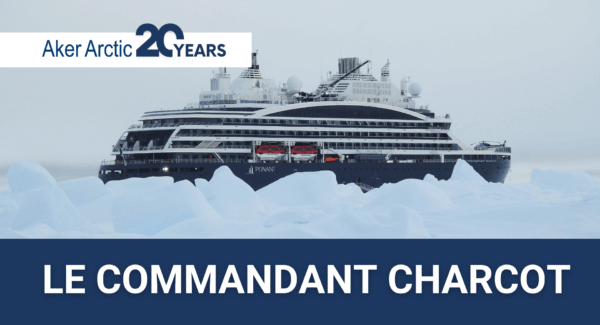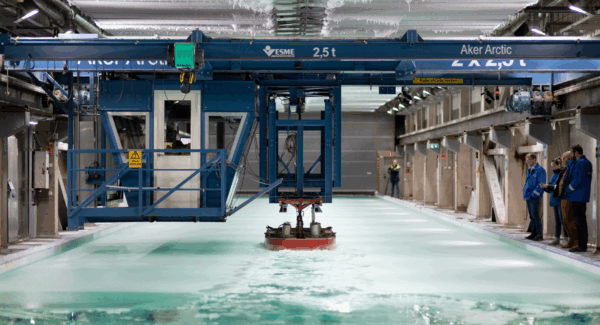The father of modern icebreakers: FESCO Sakhalin
In celebration of Aker Arctic Technology’s 20-year anniversary, we will publish regular articles highlighting the different projects the company has completed over the years in taking the world of icebreaking into the 21st century.
With various technological achievements and breakthroughs in these past twenty years, one of the first major projects to capture these innovations in icebreaker design was FESCO Sakhalin (later SCF Sakhalin), Aker ARC 101. Considered to be the father of modern icebreaking among many at Aker Arctic, the project paved the way with proven icebreaker solutions that would come to define many modern icebreakers.
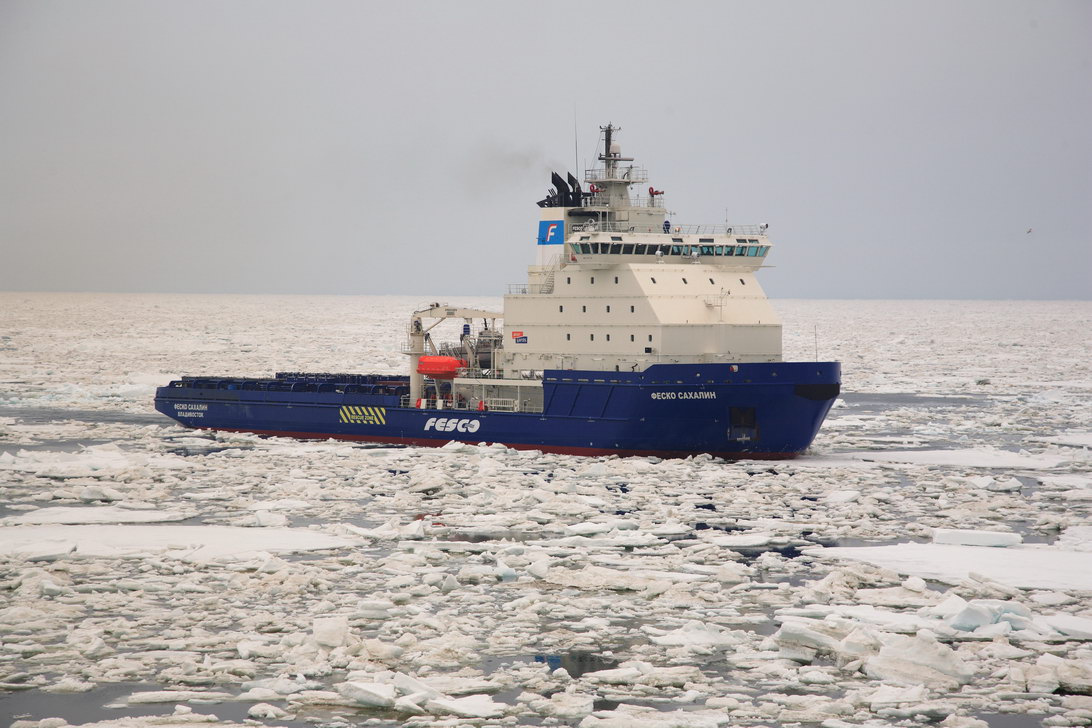
Before the founding of Aker Arctic Technology Inc, the knowledge base and people who would form the company were centralized at the Arctic Research Center and Engineering Department of the shipyard in Helsinki. At the time, extensive work and research were done in the development of next-generation icebreakers.

FESCO Sakhalin came to be a fundamental project in applying the concepts and principles developed through both extensive experience and research and development into a converged solution. The project also served as a foundational project in the transition to Aker Arctic as an independent design company that demonstrated the company’s capabilities and long-standing commitment to innovation.
Multiple ice research trips to gather data of the conditions
FESCO Sakhalin was a project to design a standby and supply icebreaker to support the oil platforms in the Sakhalin-I project. Before the start of the vessel design project, several ice research trips (both field trips and vessel-based) were made to Sakhalin Island in the 1990s to understand the ice and environmental conditions. Notably, an ice expedition in 1997 profiled and drilled over 50 ice ridges. This work was conducted for Exxon, with a focus on the Arkutun Dagi area.
These studies were used to set the design criteria for the vessel. The vessel was to be classified as a DNV ICEBREAKER ICE-10 ice class icebreaker , equivalent to somewhere between a modern-day Polar Class 4 and Polar Class 3 icebreaker. Designed for Exxon and operated by the Far East Shipping Company (FESCO), the requirements for the ship were plentiful and stringent. With many intense performance requirements and no flexibility in changing the dimensions of the ship, all the stops had to be pulled.
Icebreaking innovation
The vessel was designed to break 1.5 m ice with 20 cm of snow ahead at a speed of 3 knots. Even more demanding were the requirements for operating astern in thick level ice and heavy ridges , along with the manoeuvrability needed for an offshore vessel and the strict draft requirements. These design drivers pushed towards an efficient icebreaking hull form with sloped sides and two azimuthing propulsion units with open propellers.
Additionally, to make the vessel more commercially competitive, it was determined that the installed power would have to be kept within reasonable limits. Although the decision to limit the power to 6.5 MW per propulsion unit would reduce costs, power consumption, and the weight of the propulsion system and main engines, it would put considerable emphasis on the efficiency of the hull form. The project would become the first large icebreaker to feature the twin-wedged stern (also called a vaulted stern) that complements twin azimuthing propulsion units.
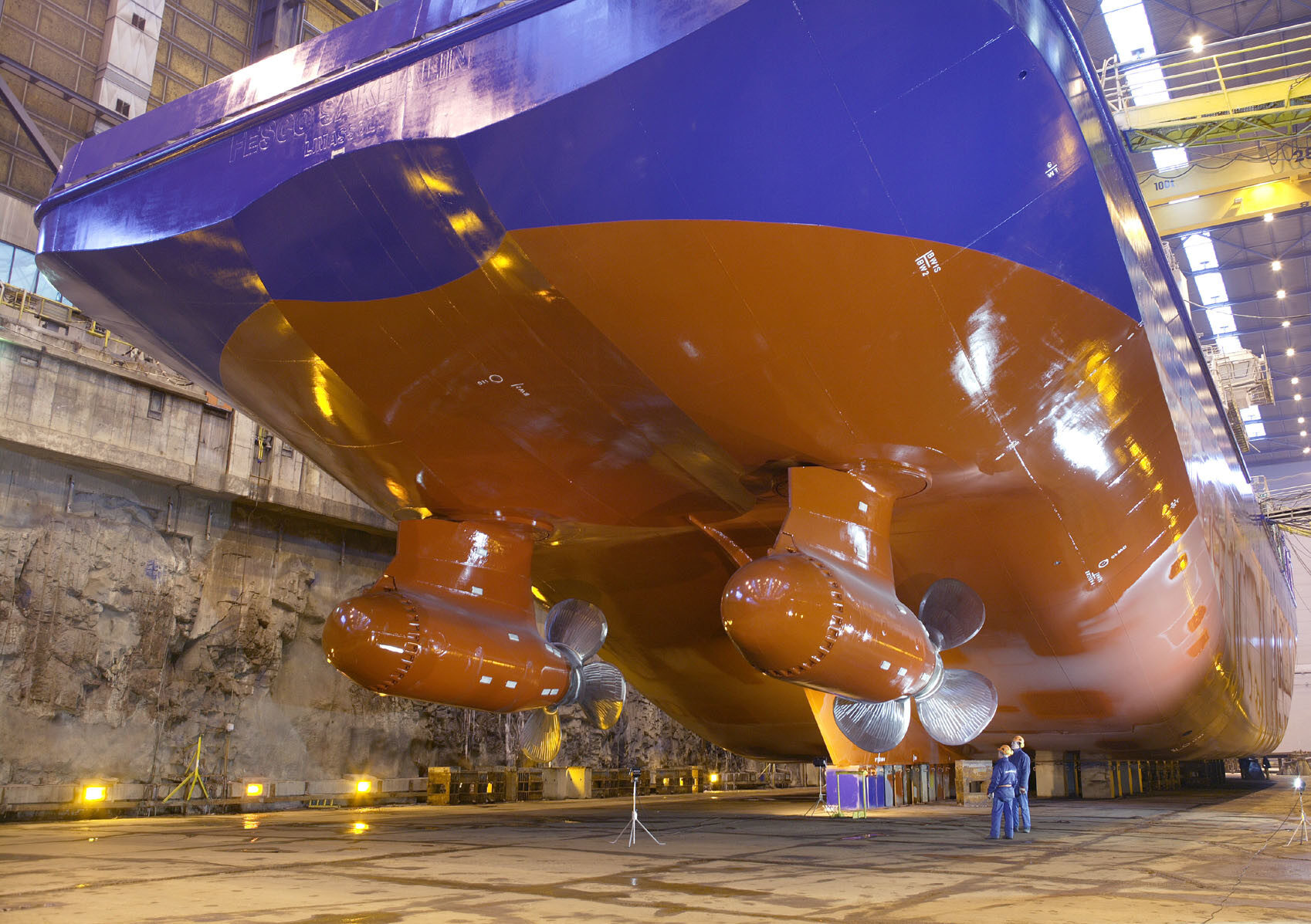
A novel stern geometry
The double-wedged stern, which builds on Aker Arctic’s DAS™ concept, is a stern that when going astern in ice, breaks ice at two points to protect the propulsion units. Still a novel concept at the time, a fine balance was needed to ensure the ice broke where intended and flowed correctly to minimize both ice resistance and propeller ice interaction. Further considerations were needed to ensure the stern was not too disruptive for open water flow.
This type of stern had extensive research and development put into it before the project and had only been implemented in shallow-draught icebreakers. The downside of the stern was its novelty and complex geometry made it not only hard to build but also to install the propulsion units.
Maximizing endurance and fuel capacity
In addition to icebreaking requirements, FESCO Sakhalin had a very stringent open-water endurance requirement. The vessel was to have 70 days of endurance, and fitting the necessary fuel to sustain such a long endurance required pushing the boundaries of icebreaker design.
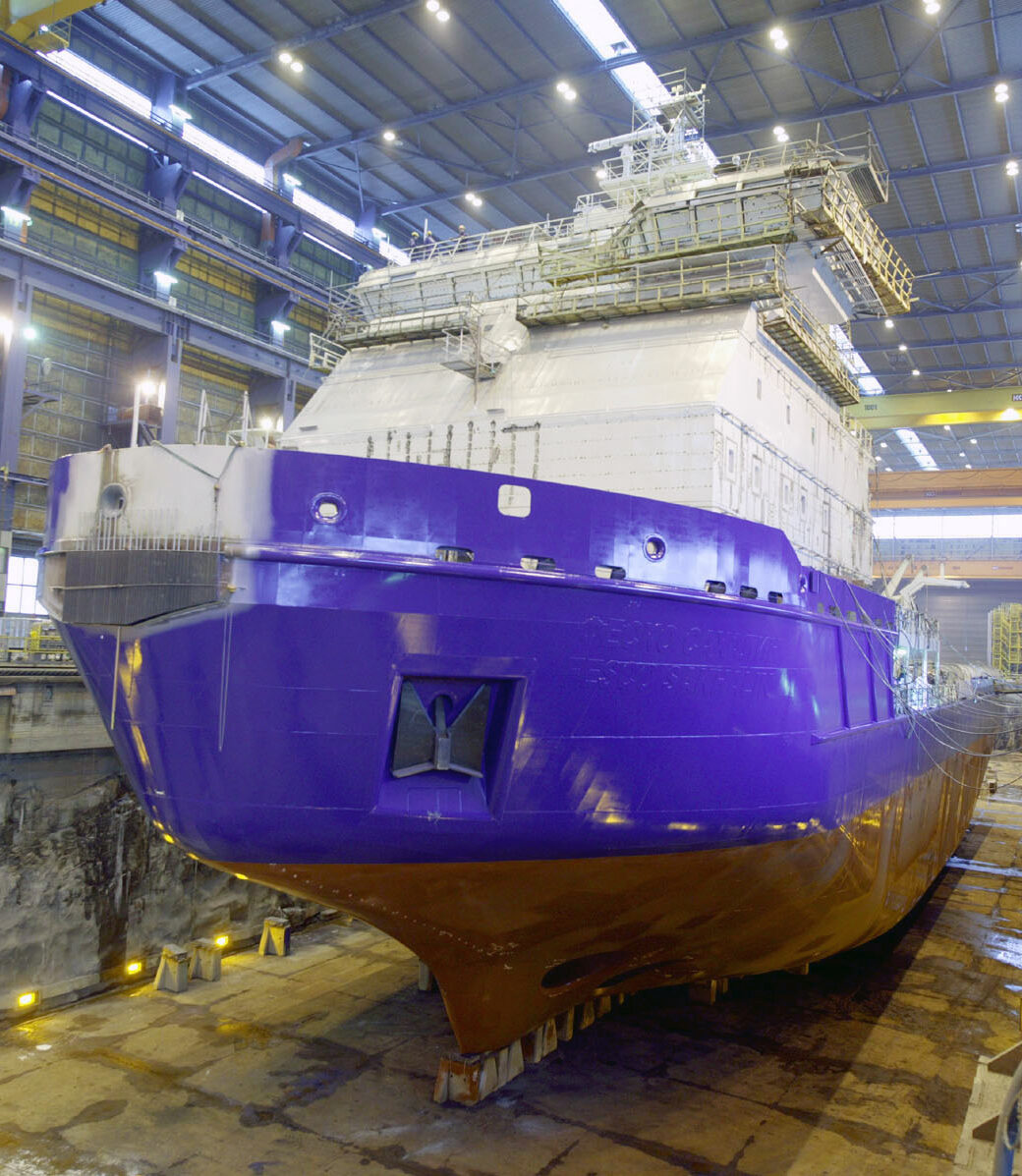
To maximize the capacity for fuel space onboard, the efficacy limits of sloped sides and the block coefficient for an icebreaker were pushed to the limit. Even then, it was challenging to fit everything into the ship with the high fuel capacity needed, in addition to all the space and weight reservations for offshore platform supply, as well as oil recovery.
To minimize the fuel needed onboard, the age-old challenge of icebreakers became ever more relevant. Extensive work was done to maximize open-water efficiency while maintaining icebreaking performance.
Careful iterative developments were done on the bow and bow shoulders to develop a hull form that could break 1.5 m efficiently, while minimizing resistance in open water. The addition of a soft forefoot with an S-shaped stem to house two bow thrusters for dynamic positioning operations added further complexity, and a centreline skeg helped improve the flow in the stern and course stability.
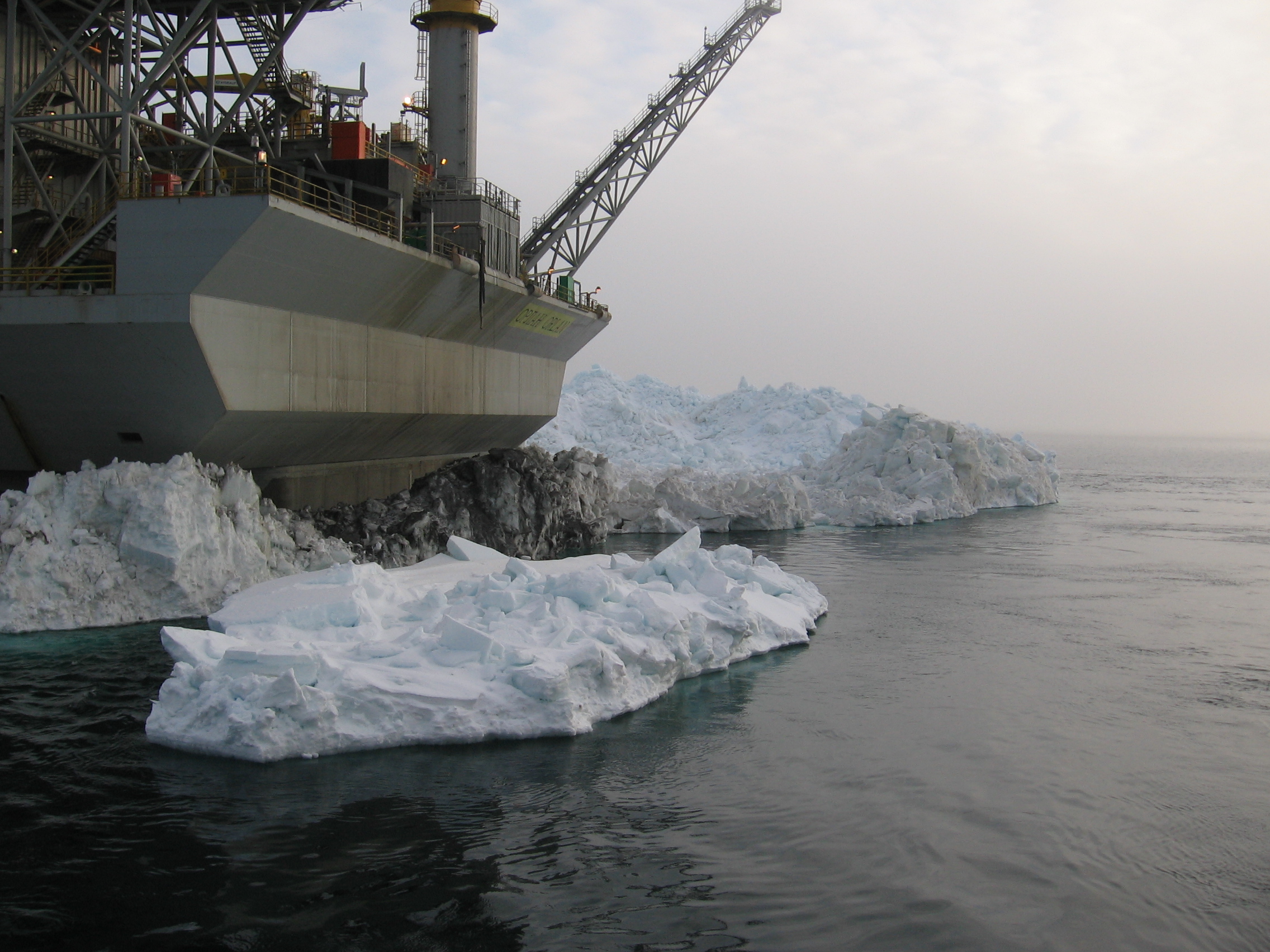
One of the greatest challenges was the need for the vessel to clear rubble buildup in the Sakhalin-I field. Due to the shallow water in the Sakhalin-I field, ice accumulates against the platforms and grounds, forming stamukhi rubble buildups around the platform. Extensive tests were conducted to recreate this phenomenon in the ice model tests to create manoeuvres, icebreaking interactions, and flushing effects needed to clear the buildups to access the platforms.
Building success and a continued legacy
Despite challenges at every turn, the design team managed to design and build a solution meeting all the requirements. The vessel was weight-critical and remained within limits through careful weight management throughout the design process.
From the strict size limitations and extensive capability requirements, an icebreaker was born that would become the forefather of modern icebreakers. The double-wedged stern and twin azimuthing units, balanced icebreaking bow and other details in the vessel proved to be a strong reliable solution as an icebreaker.
Following very positive feedback from the first vessel delivered in 2005, six additional ships under the Sakhalin series were built in Helsinki from 2012 to 2018.

The solutions utilized in FESCO Sakhalin were later implemented in many subsequent Aker Arctic designs and other modern icebreakers. For example, the vessel served as the basis for the Aker ARC 146 design, the Multi-Purpose Vessel for the Canadian Coast Guard, where 16 are expected to be built.
Being the first to implement the principles from years of experience, research, and development, the vessel started a new generation of icebreakers aligning with the start of Aker Arctic and the company’s continuous push for innovation.
Text: Aaron Tam
